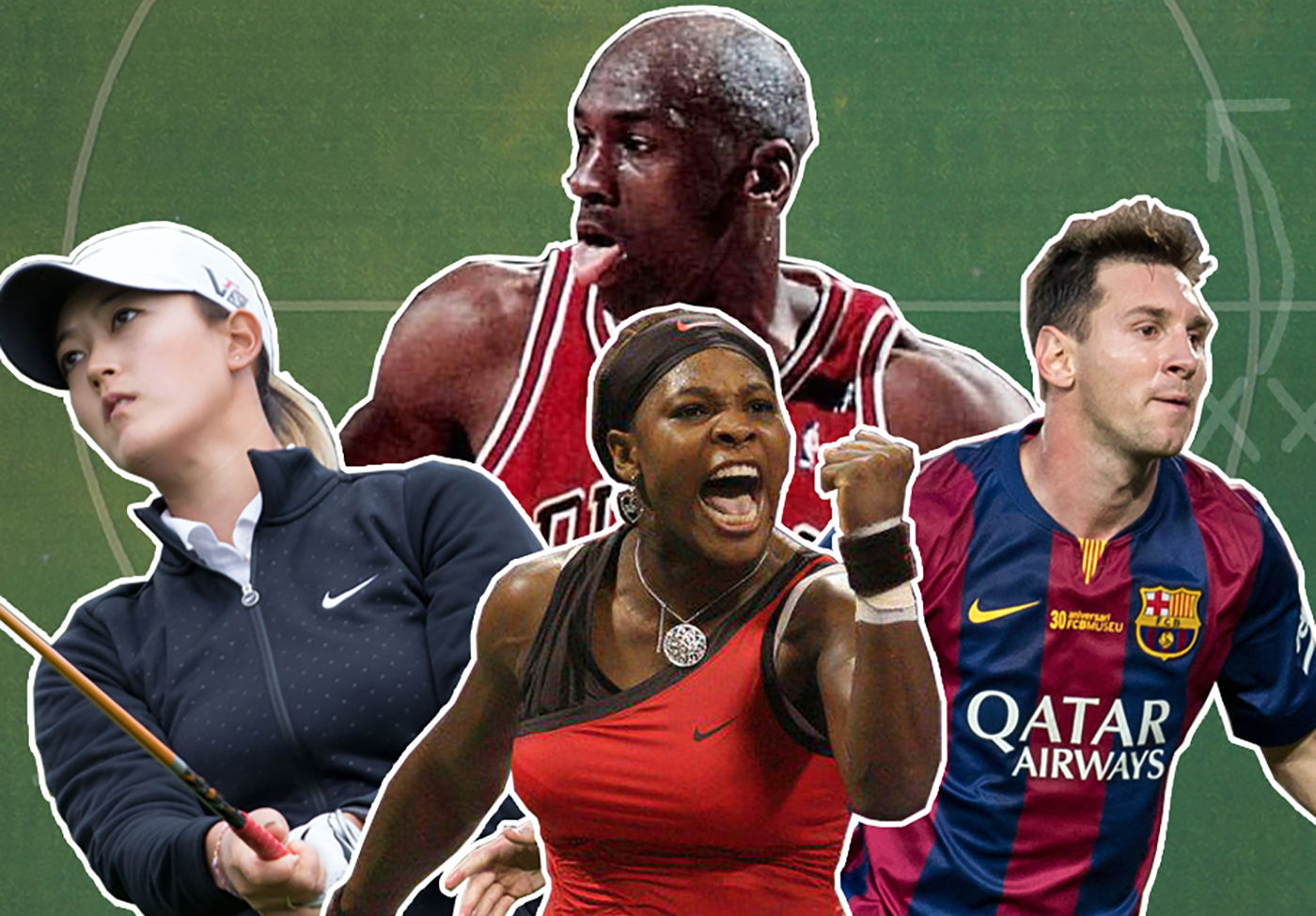July 2, 2020 8:54 pm
Friday, We Continue Our ‘Making a Phenom’ Mini-Series as We Explore the Brain
This Friday on StarTalk Sports Edition we’re continuing our “Making a Phenom” mini-series with episode two: The Mind. Last week, host Neil deGrasse Tyson and co-hosts Chuck Nice and Gary O’Reilly explored how genetics factor into the making of a phenom with author and science writer David Epstein and AxGen Co-Founder Stuart Kim, PhD. This week, it’s all about the brain.

Image Credit (Clockwise from top): Michael Jordan: Unknown author / Public domain; Lionel Messi: L.F.Salas / CC BY (https://creativecommons.org/licenses/by/2.0); Serena Williams: Hanson K Joseph / CC BY-SA (https://creativecommons.org/licenses/by-sa/4.0); Michelle Wie: Keith Allison from Hanover, MD, USA / CC BY-SA (https://creativecommons.org/licenses/by-sa/2.0).
What does the brain of an elite athlete look like? What can the brain tell us about how we perform on the field? Our trio is joined by neuroscientist and StarTalk regular Heather Berlin, PhD. Heather tells us what we would find if we probed the mind of a superstar athlete. Find out how Heather gathers brain data in the lab. Discover more about how brains work and what we’ve been able to learn about decision-making. Does your brain know what you’re going to do before you know?
We dive into a discussion about free will. You’ll learn how consciousness has evolved over the course of humanity. We investigate what triggers motivation when playing team sports vs. individual sports. We discuss Michael Jordan’s motivational pattern as seen in The Last Dance. And, we explore why reaching the pinnacle of your profession can sometimes lead to depression.
Then, Joan Vickers, PhD, kinesiologist and author of Perception, Cognition, and Decision Training: The Quiet Eye in Action, joins our second segment to discuss what an elite athlete is really looking at while playing their respective sport. You’ll learn about the “Quiet Eye” and how it works. Can quiet eye training help an athlete get out of a slump? As Joan says, you’ll find out how elite athletes can “predict the future.”
In our last segment, Heather rejoins the crew to ponder the future relationship of neuroscience and professional sports teams. We debate which would have more of an impact on a rising phenom: fame or money. Heather tells us how certain personality tests can help us predict how players will react in certain situations. However, she also tells us why we still have a long way to go. All that, plus, we explore the history of neuroscience and why we might need some time before we can fully crack the mysteries of the brain.
Please join us tomorrow for Making a Phenom: The Mind at 7pm ET right here on our website, as well as on Apple Podcasts, Google Play Music, SoundCloud, Spotify, Stitcher, and TuneIn. If you’re a StarTalk+ Patron or an All-Access subscriber, you can watch or listen to this episode ad-free at 7pm, too.
That’s it for now. Keep Looking Up!
– Ian Mullen
Get the most out of StarTalk!
Ad-Free Audio Downloads
Priority Cosmic Queries
Patreon Exclusive AMAs
Signed Books from Neil
Live Streams with Neil
Learn the Meaning of Life
...and much more

 Become a Patron
Become a Patron

